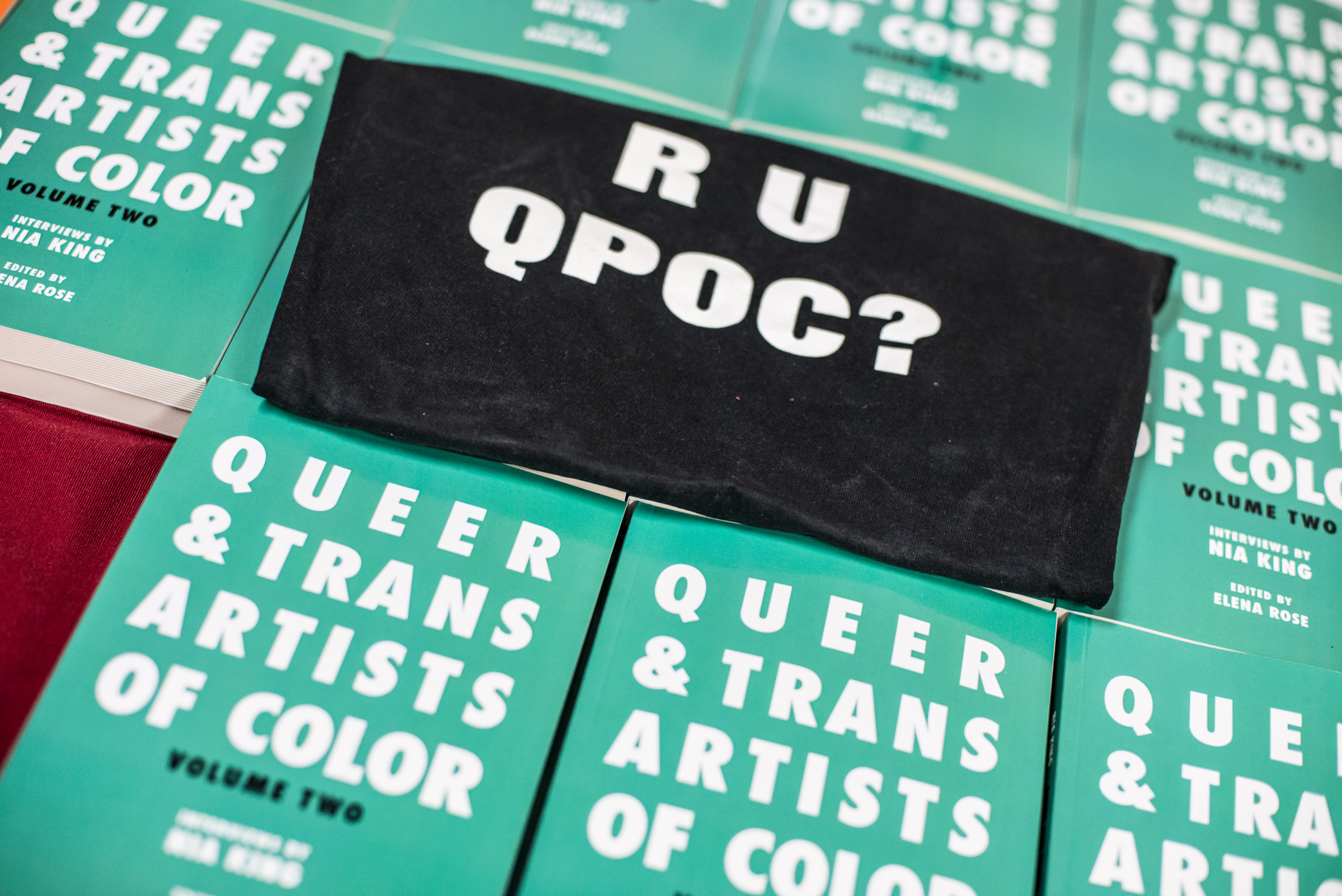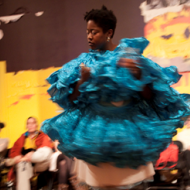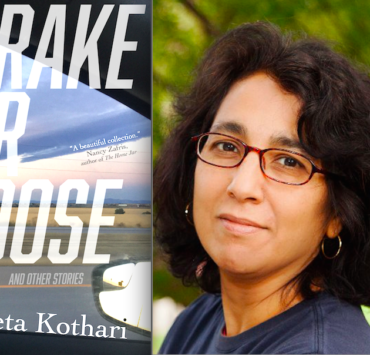
When the apocalypse arrives as revolution or colony collapse, when electricity fizzles and we’re all by the fire trying to rebuild culture, I’ll be glad to have Nia King’s Queer & Trans Artists of Color books nearby. Filled with intelligence and insight, these books offer practical examples of marginalized people creating and transforming culture, making art against the odds. The first volume Queer & Trans Artists of Color: Stories of Some of Our Lives (2014) included interviews with 16 artists, including Janet Mock, Ryka Aoki, Julio Salgado, and Leah Lakshmi Piepzna-Samarasinha. Recently, Queer & Trans Artists of Color Volume 2 (2016) hit the stands. In her foreword, Piepzna-Samarasinha declares: “just think about the fucking importance and audacity of saying: ‘Volume 2.’ So much of the time, in publishing, QTPOC [queer trans people of color] are told we’re lucky if we get one volume, or half a volume. . . Fuck that. We deserve an encyclopedia of us . . . We deserve to have a rich, deep archive of brilliant complexity.” Indeed.
Volume 2 expands into that “rich, deep archive.” Following the model of the first volume, it features 16 interviews that King selected from her podcast, We Want the Airwaves. A self-described “mixed-race queer art activist,” King conducts interviews knowledgeably as a QTPOC artist herself. Curious, warm and direct, she even knows some of her subjects socially. Conversations are rich, free-wheeling and candid. And it’s wonderful how often the word “[laughs]” appears on the page. King and editor Elena Rose have also continued placing artist biographies at the end of the book, so each interview arrives without context or clear indication of the artist’s race, gender, or artistic practice. While this can be disorienting, or produce an insider vs. outsider vibe (you mean you don’t know so-and-so already?), this decision allows each artist to reveal his/ her/ hir/ their individual story in response to King’s questions without reader preconceptions.
The artists themselves vary tremendously across race, ethnicity, age, sexual orientation, gender identity, ability, education, profession, and artistic practice. Their artistic disciplines span performance, painting, software, games, textiles, literature, theory, music, and film. Often active in more than one form, the QTPOC artists here don’t deny dire realities of systemic oppression, still they claim their own power. “How many other trans Latinas have PhDs?” media artist micha cárdenas muses. “Oh, maybe I am the first one that survived this long.”
In her introduction, King recognizes the rampant violence against people of color and LGBTQ people as a context for this book. She also declares: “This book doesn’t matter just because we are being murdered in the street. It matters because the artists in this book are fucking brilliant and you need to know about them . . . I want straight and white people to know what we are up against. I want queer and trans people of color to know that our lives are possible. That we have a future.” To this end, the book documents and celebrates QTPOC survival and artistic success. It serves as an access point into community for burgeoning/ self-discovering QTPOC artists. It defies stereotypes, informs, and de-centers straight and white people. It highlights the variety and multiplicity of QTPOC artistic communities, as well as the diversity of QTPOC artistic experiences. Most importantly, it allows everyone across all categories to “bear witness to QTPOC brilliance.”
Conversations with Juba Kalamka, co-founder of homo-hop group Deep Dickollective, and Cherry Galette, co-founder/ director of Mangos with Chili, preserve the legacy of those legendary QTPOC performance troupes. Interviews with painter Grace Rosario Perkins, poet/ performer Amir Rabiyah, artist / filmmaker Tina Takemoto, and literature professor/ visual artist Ajuan Mance highlight how queer artists can recover, reclaim and transform personal, racial and cultural history. Weaver Indira Allegra explains using textiles to protest police violence. Poet Trish Salah’s breaks down issue-based vs. identity-based organizing. And more. Every interview is worth reading. Other scintillating artists include Elena Rose, Mimi Thi Nguyen, Martín Sorrondeguy, Lexi Adsit, Mattie Brice and Kiley May. Other discussion topics include gentrification, mental and physical health care, biphobia, resistance, and the need to recognize more voices within queer communities (something this book itself achieves).
One of the best parts of this book is how honestly the artists speak about money. In her acknowledgments, King even writes: “I’d like to thank the voters of Oakland for raising the minimum wage in 2014 so I only had to work one job while writing this book instead of two.” While this public support helped, it matters that Volume 2 was produced through wage labor and crowdfunding outside of the academic and publishing mainstream. This hard, urgent work, like so much QTPOC artistic and cultural work, was clearly a labor of love. Now that this book exists in the world, artists, teachers, librarians, arts activists, and organizers should make sure to support it. This book should be bought, taught, reviewed, discussed, and shared long into the future. As storyteller May says: “After we’re long gone, all that’s left of us are our stories that we leave behind.” This book, these stories, will bring light and heat.
Buy Nia King’s Queer & Trans Artists of Color
Image Credits: Sunshine Velasco

Gabrielle Civil is a black feminist poet, conceptual and performance artist, originally from Detroit, MI. In summer 2014 she premiered “_____ is the thing with feathers” and reprised “Say My Name” (an action for 270 abducted Nigerian girls) at “Call & Response,” an innovative two-part festival of black women and performance that she organized at Antioch College. Other recent work includes: “Fugue (Da, Montréal)” at the Hemispheric Institute Encuentro in Montreal, Canada (June 2014); “Aide-mémoire,” at the AFiRiperFOMA Biennial in Harare, Zimbabwe (Nov. 2013); and a restaging of John Cage’s “How to Get Started.” Gabrielle is currently circulating Swallow the Fish, her critical/creative text on black feminist performance art practice. She is Associate Professor of Performance at Antioch College in Yellow Springs, OH. The aim of her work is to open up space. www.gabriellecivil.com







